
..
Bar Kochba, year 132 CE large bronze (GBC 677 - TJC 220)
..
95 specimens listed (Mildenberg = 101)
...
THE 3 BEST SPECIMENS
(A high definition pic of the best large bronze known is shown at the bottom of this page)



.
Please visit our sponsors:
...
![]()
...
1. H677 obverse dies
.
Mild. O1: Five groups of six leaves on each branch of the wreath
Connected to R1







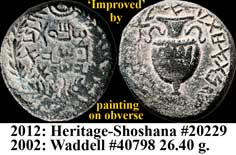











About the last (countermarked) specimen, Mr. Goldberg (the seller) wrote in 2001: "Possibly unique year 1 large bronze. This is a most unusual variety to an already rare series -- in fact this being the first countermarked large Bar Kochba bronze that we've handled. The counterstamp would indicate that it was applied under the authority of Hadrian's administration, yet by its appearance the coin would seem to have endured an excessive amount of wear within a six year period. Although the striking of these coins can be notoriously uneven, perhaps, though, the coin was flattened or hammered to some extant in an attempt to deface it prior to being counterstamped. In any event, it remains a provocative item from this contentious era of Roman and Judaean history"
.- Cut specimens struck by the pair O1-R1 -



Connected to Mild. R2




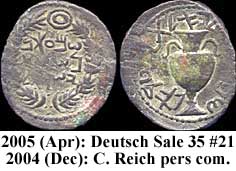






Connected to Mild. R3b (NOT 'R3')



Connected to Mild. R4

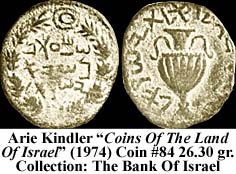
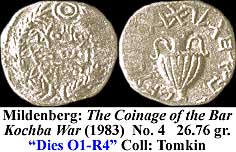



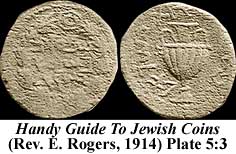

Connected to Mild. R5


Connected to Mild. R6
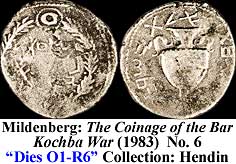
Connected to Mild. Unrecorded


Connected to an unidentifiable reverse (too tooled)

....
Mild.
O2: Seven groups of
2 leaves on each branch.
There
is a dot under the bottom of the wreath:

Connected to Mild. R2




Connected to Mild. R3

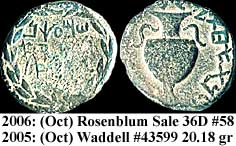





Connected to Mild. R4







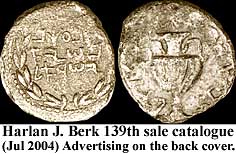



Connected to Mild. R7
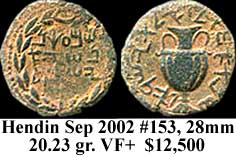








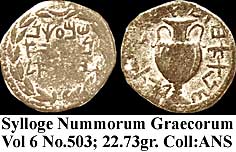







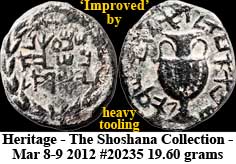
Connected to Mild. R8



.....
![]()
2. H677 reverse dies
.
Mild. R1



















.- Cut specimens -
Amazingly, the three cut specimens known are all struck by the pair O1-R1



...
Mild. R2















.
Mild. R3







..
Mild. R3b (not R3)



.
Mild. R4
Connected to O1








Connected to O2











..
Mild. R5: Small letters - type 1 -


.
Mild. R6

.
Mild. R7


















.
Mild. R8



..
Mild. Unrecorded: Small letters - type 2 -
About the 2nd specimen, Mr Goldberg wrote: "This unusually heavy and thick flan is indicative of the earliest large-bronze issues. The later die combinations and year 2 types were invariably struck upon thinner host coins, as obviously the early sestertii and large medallionl ike city coinage bronzes had been utilized and were no longer available. This reverse die was plated by J. Chaim Kaufman in "Studies in Memory of Leo Mildenberg" (INJ Volume 14), p. 135, at bottom"


..
The reverse of the following specimen is too poor to be identified:

The reverse of the following specimen is too heavily tooled to be identified:

.
.
High definition pic of the best large bronze known:
.

